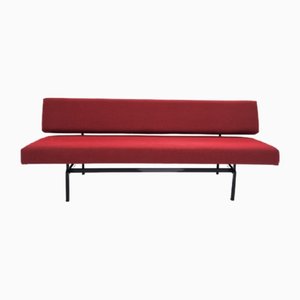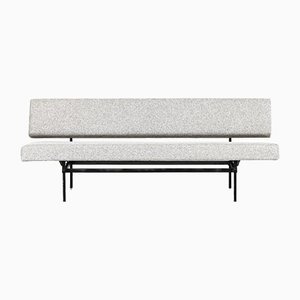
The Life of Martin Visser
Born in Papendrecht, Holland on January 26 1922, Dutchman Martin Visser was a furniture designer, architect and collector. After studying Civil Engineering, Visser began to work as an architectural draughtsman. He eventually got a job in the furniture department at De Bijenkorf in Amsterdam, where he was introduced to In 1954, Visser was asked to come on board as a designer and head of collection at 't Spectrum. Visser’s many and notable designs for 't Spectrum included sofas, armchairs and , and his creations often determined the overall mood of the entire collection.
The style of Martin Visser
Since the end of the 1950’s, Visser’s solid, bold and geometric designs have defined the look of 't Spectrum’s collection. The absence of decoration in Martin Visser’s work demonstrates his admiration for the architect Hendrik Petrus Berlage and for pre-war functionalism. Despite Visser’s objects often having an aesthetic similar to industrial furniture (http://eu.pamono.com/industrial-furniture), his designs frequently utilized craft-techniques such as tubing that was cut and welded rather than bent. From 1978 until 1983, Visser was the head curator of modern art at the Boymans-van Beuningen Museum in Rotterdam. After this, Visser returned back to furniture design though his design aesthetic had changed: he began to push for the simplicity and clarity of form. He used materials such as cardboard and perforated sheet-steel, which showed that Visser was drawing inspiration from the art world rather than the design world.
Martin Visser as a collector
For over fifty years Martin Visser built up an important private collection of more than 400 works of modern art and design, now exhibited at the Kröller-Müller Museum in the Netherlands under the name 'Former Visser collection’. Included in the collection is a model of Visser’s own home in Bergeijk: a protected building designed by Gerrit Rietveld, built in 1955 and later extended in 1968 by Aldo van Eyck. Martin Visser’s career was crowned in December 1998 with the oeuvre prize for design.




